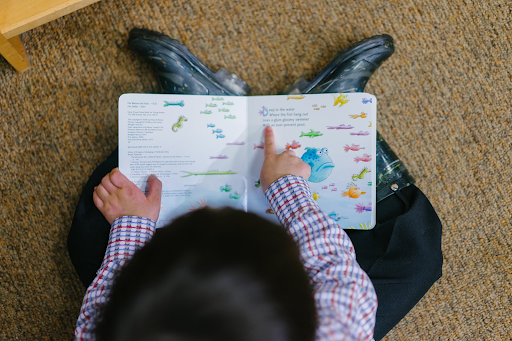The Ontario Human Rights Commission recently released the Right to Read report, which showed the education system is failing children who struggle to read.
Early learners are not always assessed properly and the interventions are often too few and too late to make a difference.
Before they know it, the window of optimum learning opportunity passes, and they do not learn the essential literacy skills that are needed to become strong and confident readers.
Is it only in Ontario? No. Almost two-thirds of all 4th graders in the United States l did not meet the minimal reading standards according to the National Assessment of Educational Progress.
In certain states, only one out of every four students met the required standard of reading proficiency.
Literacy is a science, and there is a plethora of things to consider when explaining variances in literacy outcomes.
For schools, timeliness is especially important in making a difference in building early literacy skills. A stitch in time saves nine.
In this article, Sprig Learning zeroes in on early literacy skills, and their impact on student outcomes.
Why Is Early Literacy Important?

By itself, literacy is paramount for success.
Learning how to read enables young students to acquire further knowledge.
Statistics from countless studies show the effect of early learning on future academic and social success.
But it is even more important to develop early literacy!
By habituating children to read, and educating them on the art of reading before they enter school, their learning potential is maximized. It’s why Sprig focuses on pre-K to Grade 3.
In the early years of school, a systematic evidence-based learning path can be continued for them throughout their education.
Such a structured literacy approach is known as the Science of Reading. Studies show that this approach can reduce the number of below-level readers by 25 percentage points.
Structured Literacy vs Balanced Literacy
Simply put, structured literacy focuses on the skill of reading, whereas balanced literacy focuses on the activity of reading.
It does not necessarily have to be an either/or situation.
But it is highly important that the skills of reading such as phonics, semantics and syntax are taught specifically and systematically, alongside taking part in reading activities.
The Sprig Language program works all these learning areas and provides activities through which these early literacy skills can be strengthened.
Structured literacy also has a diagnostic aspect, where instruction is assessment driven.
It allows educators to identify learning differences in students so the right opportunities can be provided to them to learn a particular area.
Sprig’s holistic approach to early learning always begins with such an assessment.
In order to really ensure all students succeed, there is also the need to incorporate early literacy interventions into a system of structured literacy.
What Is Early Literacy Intervention?

Early literacy intervention refers to the action that is taken to help early learners who are struggling in reading or writing.
Groups of students or individual students who are not meeting grade-level expectations are identified as needing intervention.
Effective literacy interventions increase accountability for all students.
But if not done in a systematic way or if done only after Grade 3, these programs can be very costly and miss those students who need help.
What Is the Need for Early Literacy Intervention?
Early literacy interventions enable early learners to make the right choices from the get go, when they are first introduced in the education setting.
Young learners have diverse strengths, needs and weaknesses.
For example, some children have phonological problems. If not corrected in time, it can lead to further oral language difficulties, which can compound into the inability to read at grade level.
Other students may have early symptoms of dyslexia, which can be managed with specialized instruction.
What Are Early Literacy Skills?

Early literacy skills refers to those foundational competencies required to learn how to read and write.
By focusing on these skills early on, it’s possible to reduce the number of early literacy interventions needed.
These skills include vocabulary, print motivation, print awareness, narrative skills, letter knowledge, phonological awareness, oral language development and learning to write.
Practices to Establish Early Literacy Skills
There are five main activities that prepare an early learner for reading.
They are talking, singing, reading, writing and playing.
The early literacy skills are a product of these practices.
Once an early literacy skill is identified, the appropriate literacy instruction strategy can be selected.
There are so many learning approaches that differentiate learning for students, based on their ability and current skill level.
But the question should always be asked: what activities are in this approach, and what early literacy skills is each activity working on?
Early Literacy Skills Classroom Best Practices

When instruction is designed for a classroom, it’s best if all the early literacy skills are taught.
This can be done through interactive activities such as storybook reading, rhyming games, singing songs, etc.
Sprig Language has hundreds of such learning activities that are neatly mapped to curriculum outcomes, and can be done as a whole class, in centers, or individually with each student.
It’s important to utilize a research-backed tool, system or framework that contains activities that teach all the different literacy skills. It helps educators adopt a structured literacy approach.
The University of Pennsylvania’s Penn Literacy Network conducted meta-research to find evidence supporting early literacy best practices that results in improved student achievement.
4 classroom characteristics are explored that are ideal for the successful development of literacy skills.
Student-centered: Focus on engagement with the learning material and collaboration between students.
Knowledge-centered: Focus on understanding the importance of reading and making connections between what is learned and how it applies to reading.
This includes code-based instruction, which helps children understand the relationship between spoken language and print.
Assessment-centered: Focus on regularly assessing students via formative assessments that guide learning.
Reflection-centered: Focused on understanding what is being read. Encourages students to learn different content areas using their acquired literacy.
Stages of Early Literacy Development
The five stages of early literacy development are: emergent literacy, alphabetic fluency, words and patterns, intimidating reading and advanced reading.
By placing more importance in emergent literacy and the earlier stages, it’s possible to create a safety net for students who are at risk of not reading proficiently.
It is possible to improve literacy in schools in the earlier stages by having a classroom that:
- assesses every student to tailor an individualized early literacy experience for them.
- promotes the joy of learning through activities (balanced literacy).
- teaches early literacy skills systematically (structured literacy).
- empowers early learners to practice every skill learned.
What about English Language Learners?
Sprig has a Revitalization program, which promotes Indigenous and other local languages.
Research shows that English-language development can be accelerated by making a connection between a student’s first language and English. Proficiency gained in the first language can be used to learn a second language.
By supporting a diverse set of home languages, students are provided with a more culturally responsive educational experience. This allows them to absorb concepts more quickly.
Prioritizing Early Literacy. Not a Magical Solution, but a Change in Focus.

At Sprig Learning, we aim to provide every child a fair shot at success. We know the importance of literacy too well, especially in the early years.
These considerations provide a preliminary overview into the reasons and benefits for adopting an approach that specifically caters to early literacy skills. By understanding how reading skills unfold for a variety of students, a school can adopt the right approach for their classroom and educators.
Assessments, early interventions and evidence-based activities targeting specific skills can be seamlessly integrated into the learning process.
Educators have a lot on their hands, and any new approach should support their instructional practices and make their lives easier.
To stay updated on the science of literacy, please subscribe to our newsletter, Root to Fruit, written for those who value early childhood education.
Have questions about using intuitive tools that make a difference in building early literacy skills? Contact us.

